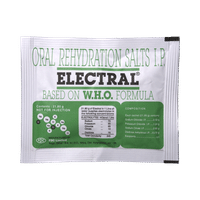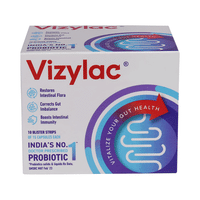Rs.115for 1 tube(s) (5 gm Eye Ointment each)
food interaction for Synopol
alcohol interaction for Synopol
pregnancy interaction for Synopol
lactation interaction for Synopol
food
alcohol
pregnancy
lactation
No interaction found/established
No interaction found/established
Information regarding the use of Synopol Eye Ointment during pregnancy is not available. Please consult your doctor.
CONSULT YOUR DOCTOR
Information regarding the use of Synopol Eye Ointment during breastfeeding is not available. Please consult your doctor.
CONSULT YOUR DOCTOR
SALT INFORMATION FOR Synopol
Polymyxin B(5000IU)
Uses
Polymyxin B is used in the treatment of severe bacterial infections. It is used to treat certain types of serious infections which are not responding to other antibiotics.
How it works
Polymyxin B is an antibiotic. It kills bacteria by destroying the bacterial cell membrane.
Common side effects
Burning sensation, Eye irritation
Chloramphenicol(0.1% w/w)
Uses
Chloramphenicol is used in the treatment of bacterial infections. It is used to treat certain types of serious infections caused by bacteria when other antibiotics cannot be used.
How it works
Chloramphenicol is an antibiotic which stops the growth of bacteria. It does so by preventing synthesis of essential proteins required by bacteria to carry out vital functions. This does not directly kill the bacteria, but prevents them from increasing in numbers, and eventually clears up the infection.
Common side effects
Vomiting, Nausea, Diarrhea, Glossitis (tongue inflammation), Hypersensitivity, Bone marrow depression, Aplastic anemia, Increased bleeding time, Optic neuritis, Ototoxicity, Acidotic cardiovascular collapse, Stomatitis (Inflammation of the mouth), Enterocolitis, Gray baby syndrome, Application site reactions (burning, irritation, itching and redness), Blood dyscrasias, Headache, Depression, Delirium (acute confusional state), Jarisch-Herxheimer reaction, Superinfection
SUBSTITUTES FOR Synopol
No substitutes foundExpert advice FOR Synopol
- Polymyxin B treats serious bacterial infections that have not responded to treatment with other antibiotics.
- It is given by injection or drip (infusion) into a vein usually over 30-60 minutes.
- Finish the prescribed course, even if you start to feel better. Stopping it early may make the infection come back and harder to treat.
- Diarrhea may occur as a side effect. Inform your doctor if ti doesn’t stop or if you find blood in your stools.
- Your doctor may get regular blood tests done to monitor the level of the medicine in your blood.
Frequently asked questions FOR Synopol
Polymyxin B
Q. What is Polymyxin B? What is it used for?
Polymyxin B is an antibiotic that fights bacteria. It is used to treat severe infections of the skin, soft tissues, heart and blood. It is commonly used to treat critically ill patients who are hospitalized.
Q. How is Polymyxin B administered?
Polymyxin B should be administered under the supervision of a trained healthcare professional or a doctor only and should not be self-administered. The dose will depend on the condition you are being treated for and will be decided by your doctor. Follow your doctor’s instructions carefully to get maximum benefit from Polymyxin B.
Q. Is Polymyxin B safe?
Polymyxin B is safe if used in the dose and duration advised by your doctor. Take it exactly as directed and do not skip any dose. Follow your doctor's instructions carefully and let your doctor know if any of the side effects bother you.
Chloramphenicol
Q. How long does Chloramphenicol takes to work?
Usually, Chloramphenicol starts working soon after taking it. However, it may take some days to kill all the harmful bacteria and make you feel better.
Q. What if I don't get better after using Chloramphenicol?
Inform your doctor if you don't feel better after finishing the full course of treatment. Also, inform him if your symptoms are getting worse while using this medicine.
Q. Can I stop taking Chloramphenicol when my symptoms are relieved?
No, do not stop taking Chloramphenicol and complete the full course of treatment even if you feel better. Your symptoms may improve before the infection is completely cured.






















